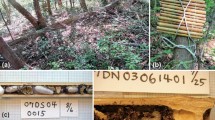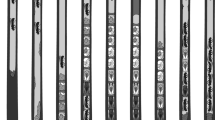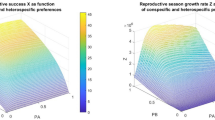Abstract
THE eumenid Rygchium foraminatum (de Saussure) and the sphecid Trypoxylon clavatum Say are common solitary hunting wasps which nest in hollow twigs, making the burrows septate with cross-walls of mortar so that a linear chain of cells is formed. Each brood cell, when first made, contains a single egg along with paralysed prey sufficient for full growth of the young hatched larva to the adult wasp. Generally the provisioned cell is only somewhat larger than the wasp which will mature within it, and indeed may be too small in diameter to permit the adult wasp, once formed, to reverse its direction within it. The oldest wasp larva of necessity lies innermost at the blind end of the burrow, while the youngest occupies the cell nearest the sole exit from the nest. When nests are constructed in burrows 4–6 mm. in diameter and 150 mm. long, each mother wasp may provision from 1–10 cells per burrow, most nests having 4–6 provisioned cells.
This is a preview of subscription content, access via your institution
Access options
Subscribe to this journal
Receive 51 print issues and online access
$199.00 per year
only $3.90 per issue
Buy this article
- Purchase on Springer Link
- Instant access to full article PDF
Prices may be subject to local taxes which are calculated during checkout
Similar content being viewed by others
References
Haldane, J. B. S., and Spurway, H., Insectes Sociaux, 1, 247 (1954).
Haldane, J. B. S., Sci. Prog., 44, 385 (1955).
Author information
Authors and Affiliations
Rights and permissions
About this article
Cite this article
COOPER, K. An Instance of Delayed Communication in Solitary Wasps. Nature 178, 601–602 (1956). https://doi.org/10.1038/178601b0
Issue Date:
DOI: https://doi.org/10.1038/178601b0
Comments
By submitting a comment you agree to abide by our Terms and Community Guidelines. If you find something abusive or that does not comply with our terms or guidelines please flag it as inappropriate.



